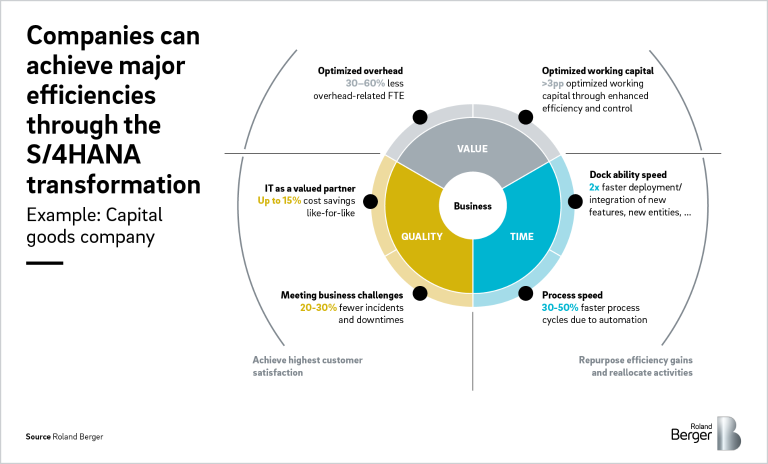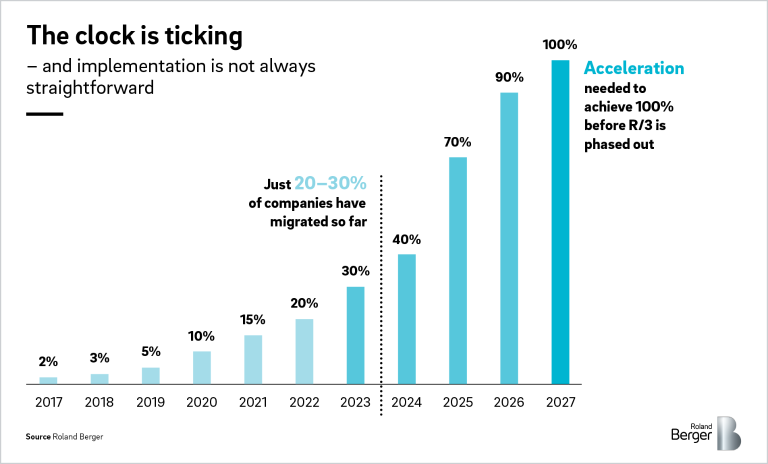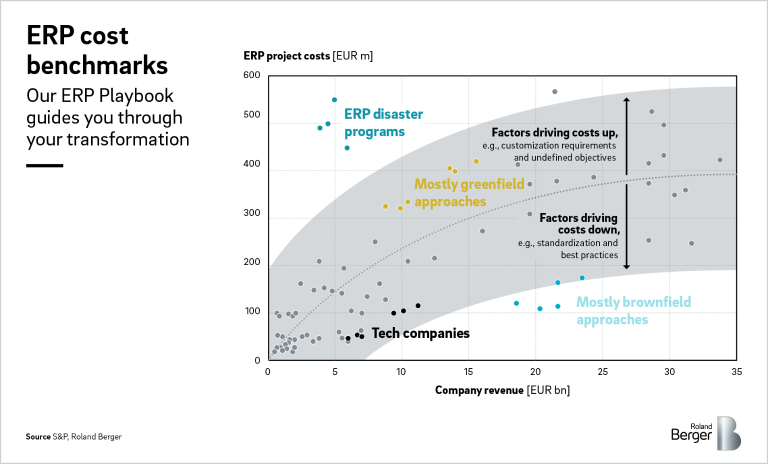In-depth study examining recruiting and organizational challenges as companies seek to take modern IT into the realms of strategic transformation.


SAP S/4 HANA transformation
By Sven Siepen and Peter Wienand
Reap the benefits, keep costs under control and ensure quality
S/4 HANA – the new enterprise resource planning (ERP) software for large enterprises from SAP – can deliver major efficiencies to companies, from helping you right-size your workforce to speeding up your ability to deploy new features. Many companies have already migrated to the new software or are in the process of doing so. But the S/4 HANA transformation is by no means straightforward, and in many cases has proved highly challenging for businesses. We examine the benefits of implementing the new system, some best practices for avoiding common pitfalls, and how to ensure you reap the full benefits of your transformation.

"The Roland Berger ERP Cost Benchmark for your S/4 HANA journey – just one of the many tools we offer – can help you unlock savings across all phases of the transformation. "
Major efficiencies in sight
The S/4 HANA transformation is first and foremost about transforming your business and only secondarily about transforming your IT system. Set your ambition level high enough and the transformation can deliver major efficiencies in three key areas: money, time and quality. On the financial side, it can help you substantially reduce the number of staff you employ in transaction-related roles, such as in invoicing or incoming orders, as well as reducing the cost of ownership of the overhead function. In terms of time, the new software turbocharges many things in your company, such as the deployment of new features and the pace of process cycles thanks to automation. And in terms of quality, it reduces the number of IT incidents and the amount of downtime, at the same time as delivering sizeable savings in IT.
Time is running out
To date, 20 to 30 percent of companies have migrated to the new ERP system. But the clock is now well and truly ticking, with support for the earlier system SAP R/3 ending in 2027. Companies that have not yet made the change will have to transform before this date. This implies a significant acceleration in the rate of companies undergoing transformation.
Keeping it under control
The key to mastering many of the challenges presented by the new software – and there have been some very high-profile failures in recent years – is to ensure that you have solid Project Management Office (PMO) in place. One option here is to employ external support, such as the quality and value assurance offered by Roland Berger. Our suite of powerful tools and benchmarks will help you set ambitious yet realistic objectives for the transformation – and devise effective strategies for achieving them. We will help you set measurable KPIs for your processes, so you can track your progress. We can help you think beyond what you do today and develop a vision for an AI-empowered tomorrow. And, crucially, we will keep a tight rein on the costs of implementing the new system, preventing them from spiraling out of control.
A positive return on investment
From our experience and research, it’s clear that a successful rollout of the new ERP system generates a positive return on investment (ROI) when done right. We advise companies to make sure that staff levels on both the business and IT sides are sufficient throughout this process, which can take three to four years. Firms should also pay attention to the other costs involved, such as for change, training and communication.
To find out more about how you can reap the benefits of the S/4 HANA transformation, download the full study here. To learn more about how Roland Berger can support you during your transformation journey, contact one of our experts.
Register now to download the full publication.


































